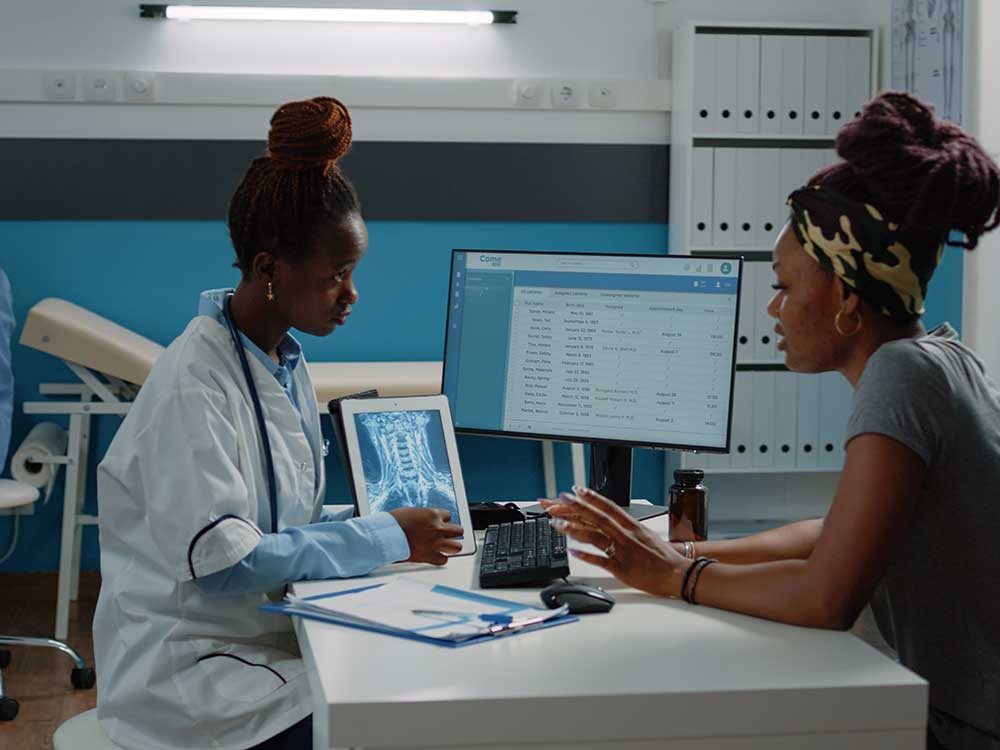How to Begin an Effective Job in Medical Administration: A Newbie's Guide
How to Begin an Effective Job in Medical Administration: A Newbie's Guide
Blog Article
Best Practices in Medical Administration for Improving Efficiency and Reducing Costs
In the ever-evolving landscape of health care, the search of ideal techniques in clinical administration is extremely important for improving performance and suppressing expenditures. By integrating sophisticated innovations such as electronic health documents and telemedicine, medical care providers can improve operations and enhance individual care. Nevertheless, modern technology alone is not a remedy; maximizing resource allotment and fostering joint interaction among treatment teams are just as vital (medical administration). As companies make every effort to stabilize high quality and expense, what techniques should be prioritized to attain these dual objectives? The solution to these concerns hold the trick to a much more lasting healthcare system.
Leveraging Advanced Modern Technology
In today's rapidly evolving healthcare landscape, leveraging sophisticated modern technology is no longer optional yet vital for reliable medical administration. The assimilation of electronic solutions right into medical care systems has actually changed the method centers operate, simplifying procedures and enhancing client care. Electronic Wellness Records (EHRs) are critical, giving thorough person data that can be accessed quickly by licensed personnel, therefore minimizing redundancy and decreasing errors. By streamlining patient details, EHRs get rid of the need for troublesome documents and facilitate seamless communication among doctor.
Telemedicine is one more technological development that has actually revolutionized person communication. It provides comfort for both patients and healthcare experts by enabling remote examinations, which can lower the requirement for in-person brows through and enhance consultation organizing. Furthermore, telehealth platforms can expand health care access to rural or underserved locations, connecting voids in care delivery.
Moreover, making use of Artificial Knowledge (AI) and machine discovering is ending up being progressively prevalent in anticipating analytics, enabling very early detection of prospective health issues and even more enlightened decision-making. These innovations, when integrated efficiently, can improve analysis accuracy and customize client therapy plans, inevitably resulting in enhanced medical care end results and functional performance.
Optimizing Source Allotment
Efficient resource allocation is crucial for taking full advantage of the efficiency of medical management. By purposefully taking care of sources such as employees, tools, and financial resources, health care centers can dramatically boost their functional efficiency, boost individual end results, and reduce unnecessary expenses. The initial step in enhancing resource allocation entails conducting a detailed assessment of current properties and identifying locations where sources might be underutilized or exhausted. This evaluation must be data-driven, using metrics and analytics to educate decision-making procedures.
Prioritizing resource appropriation based on patient needs and solution demands is essential. Carrying out flexible staffing designs can likewise maximize labor sources by adjusting personnel allotment in response to fluctuating client volumes.
Funds must be diligently kept an eye on and allocated with calculated foresight to sustain both temporary operational requirements and long-term institutional objectives. This includes investing in training programs that improve personnel proficiencies and adopting energy-efficient techniques that lower functional prices (medical administration). Inevitably, an optimized source allowance method promotes a sustainable medical care atmosphere that is responsive, reliable, and monetarily sensible
Streamlining Process Processes
When medical care centers navigate to this website goal to boost functional performance, improving process processes ends up being a pivotal emphasis. Effective workflows minimize redundancy, get rid of unneeded actions, and boost coordination among healthcare experts. This method not only increases solution shipment but likewise enhances the top quality of person care.

Next, innovation integration plays a significant role in streamlining process. Carrying out electronic wellness documents (EHRs) and electronic medical professional order entry (CPOE) systems decreases documentation, minimizes human error, and makes certain info comes to all pertinent employees. Furthermore, leveraging telemedicine platforms can enhance patient consultations and follow-ups, minimizing the stress on physical framework.

Ultimately, structured process result in set you back reductions and improved individual satisfaction, fostering a much more sustainable health care setting.
Enhancing Information Administration
Building upon structured process, optimizing data administration comes to be an important element beforehand medical care management. Efficient information monitoring systems are important for maintaining precise individual records, improving decision-making, and ensuring conformity with regulatory requirements. By carrying out robust data administration remedies, healthcare facilities can boost the high quality of client care while all at once minimizing functional costs.
One key facet of improving information monitoring is check my site the combination of advanced digital health and wellness record (EHR) systems. These systems help with the seamless exchange of patient information across various departments, decreasing replication of tests and minimizing mistakes. A properly designed EHR system supports data analytics, enabling doctor to recognize patterns and make informed choices relating to individual care.
In addition, protecting client data is vital. Taking on detailed cybersecurity procedures, including encryption and routine audits, guarantees the honesty and discretion of delicate information. This not just protects patients but likewise keeps the establishment's track record.
Investing in staff training is another crucial variable. Enlightening healthcare specialists on information management practices improves their ability to efficiently make use of technology, bring about enhanced individual results. Finally, enhancing data management through advanced innovation and thorough training is important for accomplishing effectiveness and cost reduction in clinical administration.
Fostering Collaborative Communication
An essential component ahead of time medical management is fostering collective interaction amongst health care professionals. Efficient communication is paramount for guaranteeing smooth patient care, maximizing treatment outcomes, and lessening errors. By motivating open discussion and sychronisation throughout multidisciplinary teams, healthcare organizations can enhance their functional effectiveness and lower unnecessary prices.
Central to this technique is the combination of interaction innovations such as digital health and wellness documents (EHRs) and safe and secure messaging systems, which facilitate the fast exchange of important patient information. These tools make it possible for health care service providers to access and share information in actual time, making sure that all group participants are informed and aligned in their decision-making procedures. In addition, regular group meetings and interdisciplinary rounds can even more promote a society of collaboration and accountability.
Educating programs concentrated on enhancing interaction abilities are additionally important. These programs can aid staff create the ability to communicate details plainly and pay attention proactively, thus decreasing misunderstandings and fostering a supportive work environment. On top of that, taking on standard interaction procedures, such as SBAR (Circumstance, History, Assessment, Recommendation), can improve the exchange of details, ensuring that essential details are communicated succinctly and efficiently. Ultimately, fostering collective communication results in boosted healthcare delivery and expense savings (medical administration).

Final Thought
Incorporating advanced technology, such as digital health and wellness documents and telemedicine, together with optimized resource allocation and streamlined process procedures, is crucial for boosting performance in clinical management. Effective information monitoring and promoting joint interaction amongst medical care groups are essential for lessening redundancies and enhancing treatment high quality. By prioritizing precautionary treatment and participating in top quality improvement initiatives, health care companies can attain considerable expense financial savings and improved client outcomes, thereby ensuring sustainable health care shipment in a progressively intricate environment.
Report this page